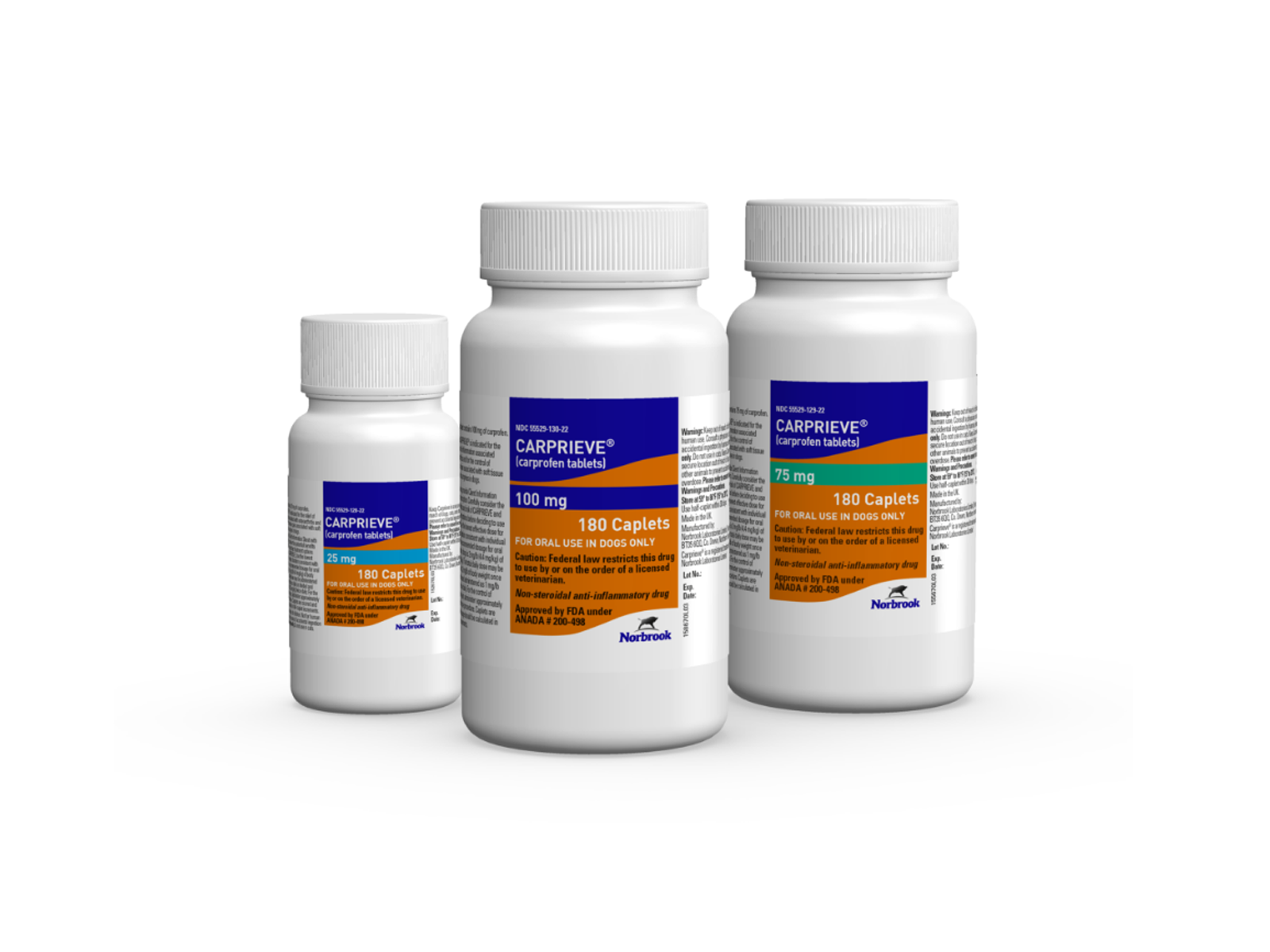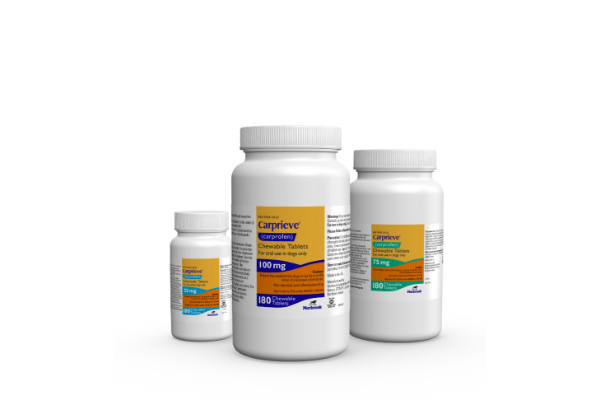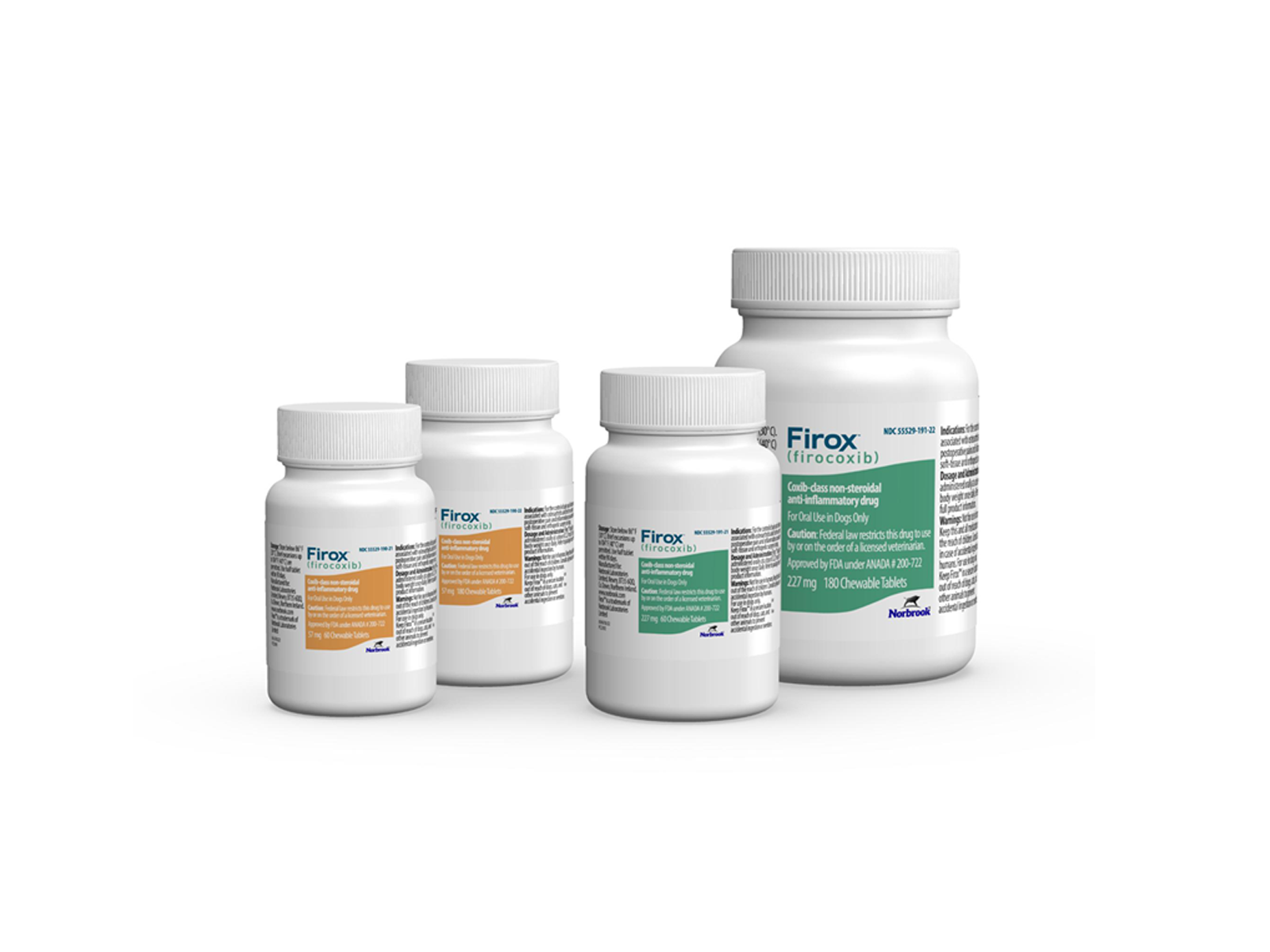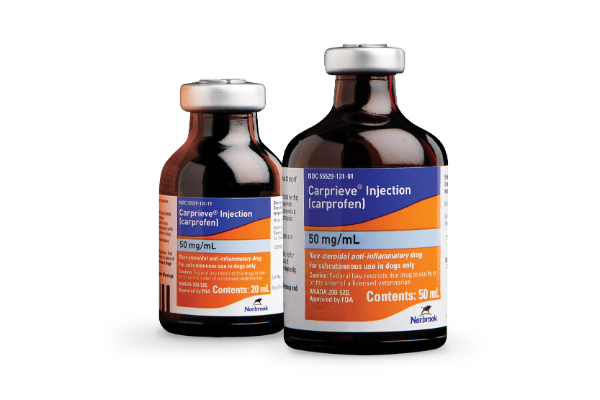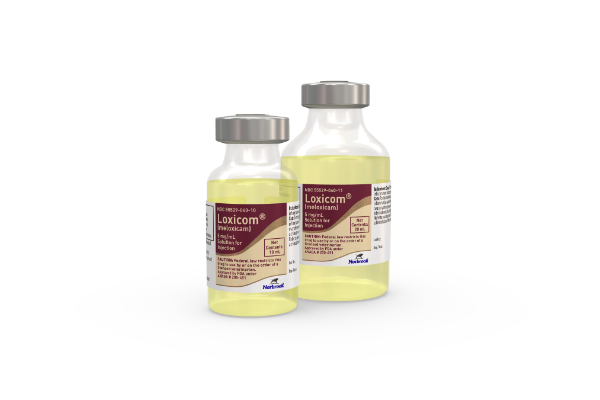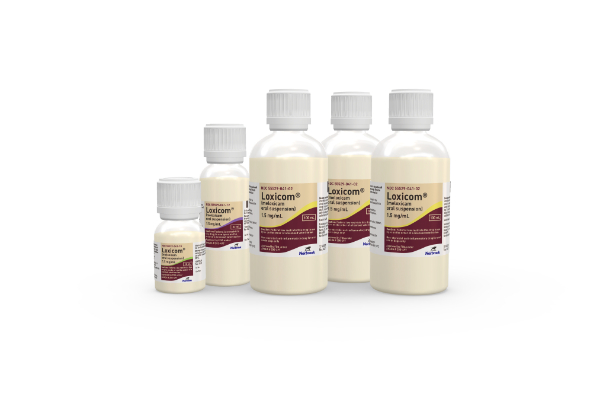
Pain in Dogs
What is Pain?
Pain is an unpleasant signal that something hurts. It is often multifactorial and involves physical and emotional stress. For example, a dog that undergoes a painful procedure to remove a torn nail will experience physical pain around the nail, but also may experience fear. Pain is considered a welfare concern so it should always be addressed. Pain can be categorized as either acute or chronic.
Acute pain usually occurs for a brief period of time because of disease, injury, or a surgical procedure.
Chronic pain is ongoing pain, usually because of a long-term disease such as osteoarthritis.
Neuropathic pain sometimes results from uncontrolled chronic pain. It is caused by injury to, or dysfunction of the nervous system. In this state, even a non-painful stimulus may be interpreted as pain by the animal.
Signs of Pain in Dogs
Dogs are unable to tell us where it hurts or how severe the pain is, so recognizing the signs can sometimes be challenging. Often dogs will instinctively try to hide signs of pain so it is important to be vigilant so that you can recognize subtle indicators such as:
Changes in Movement
A reluctance to move or a change in the way your dog moves might be an indication of pain. A leg or paw injury may be noted by a visible limp, however, in some cases it may be much more subtle. For instance, a change in gait such as "bunny hopping" (moving both back legs at the same time) could be indicative of pain.


Changes in Posture
A dog that is experiencing pain may change the way they carry themselves to try and alleviate some of the pain that they are experiencing. This may be apparent in the way they sit. For instance, they may splay their legs apart or sit with them positioned to one side to take pressure off the area that hurts. Similarly, if the dog seems tense or hunched over when they stand it could indicate that they are experiencing pain in their limbs, hips, shoulders or back.
Changes in Behavior or Demeanor
Pain often causes a change in behaviour or demeanour. Sometimes a dog may seek closeness and comfort. In other instances, they may become more aloof, distancing themselves from the family and becoming more withdrawn or less willing to be touched. A change in usual sleeping habits may also indicate that a dog is in pain, for instance they may become more restless because they are unable to get comfortable.
If a dog is experiencing acute pain, either from an internal problem, recent injury, or surgery, they may try to prevent you from touching the painful area or even show uncharacteristic aggression. You may also notice muscle twitches, shaking, or licking/biting at a particular area.
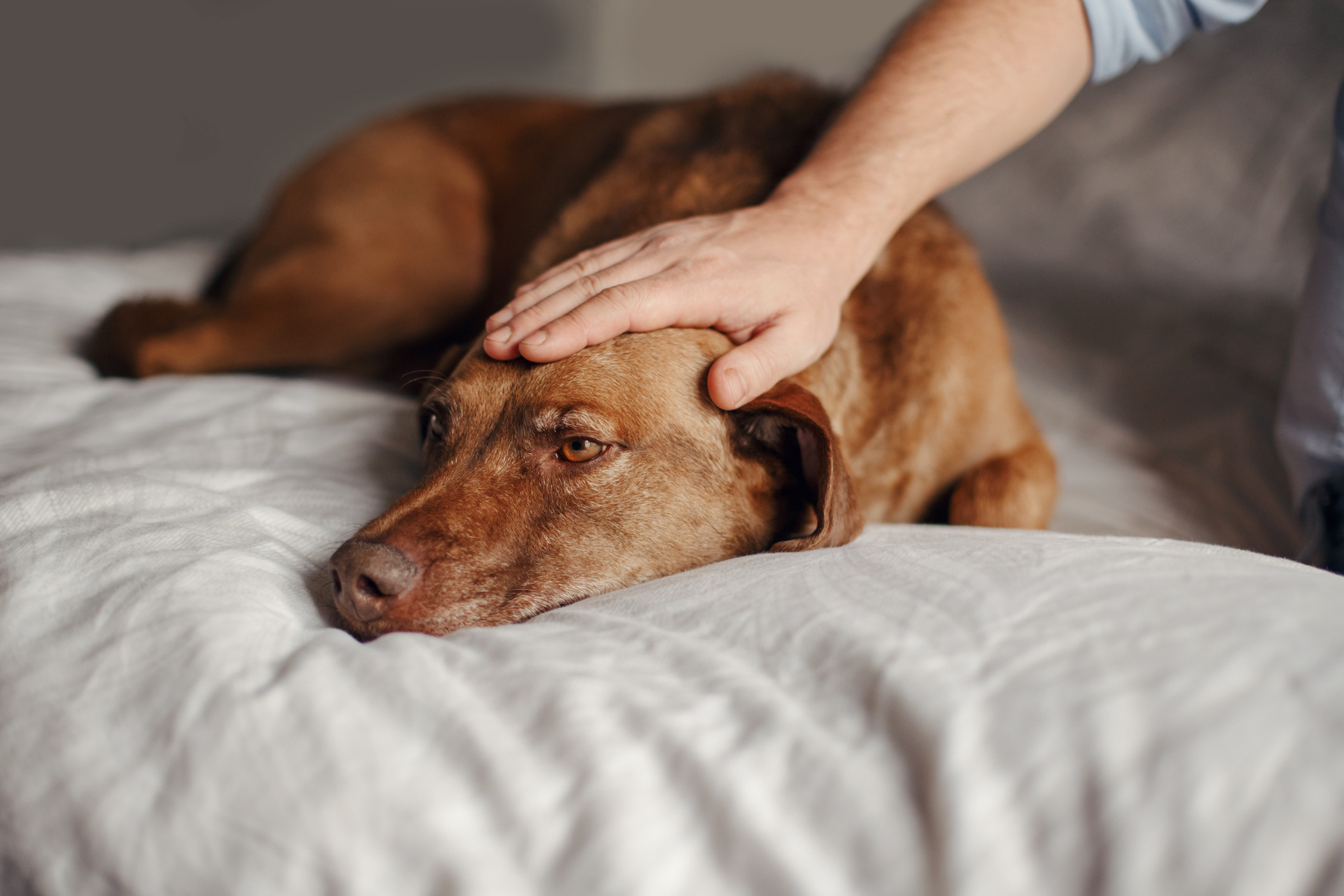

Vocalization
Dogs experiencing ongoing chronic pain may become quiet and withdrawn, however, those suffering from intense or sudden acute pain may let you know by the sounds they make. Whimpering, groaning, yelping and panting may all be signs of pain.
What to Do if you Think your Dog is in Pain?
It is good practice to conduct regular nose to tail checks on your dog. This will familiarize you with what is "normal" for your pet. As you are petting your dog, you can look and feel for any sign of injury, swelling, heat, tenderness, lumps, or bumps.
If you have any concerns over your dog’s health, or are worried that your dog is in pain, always consult your veterinarian as soon as possible.
Managing Pain in Dogs
There are a variety of licensed medications and supplements available to treat and manage pain in dogs. The most commonly used licensed medications, which require a prescription from your veterinarian, include non-steroidal anti-inflammatory (NSAID), opioid, and monoclonal antibody drugs. It is important to adhere to the prescription instructions provided by your veterinarian to ensure that the drug performs as expected, and to lessen the risk of unintended side effects.
Your veterinarian may also recommend short or long-term lifestyle changes to help alleviate pain. This may include dietary management, limiting exercise or making home adaptations to help make your animal more comfortable.
If your dog is undergoing surgery, it is likely that pain relief is built into the anesthetic plan. Often a pain medication will be administered at the start of the procedure so that it is in the system prior to any painful stimulus. Your veterinarian will likely dispense additional pain medication to be given at home after the procedure.
Safety Information
Carprieve® (carprofen tablets) Caplets
Observe label directions. For oral use in dogs only. Do not use in cats. As with other NSAIDs, rare but serious side effects involving the digestive system, kidneys or liver may occur. Such signs may include appetite loss, vomiting and diarrhea. Some of these side effects, in rare instances, may be serious, resulting in hospitalization or even death. Regular monitoring is required for pets on medication. Pet owners should be advised to discontinue treatment if side effects occur and contact their veterinarian. See product labeling here for full product information.
Carprieve® (carprofen) Chewable Tablets
IMPORTANT SAFETY INFORMATION: As a class, NSAIDs may be associated with gastrointestinal, kidney and liver side effects. These are usually mild, but may be serious. Dog owners should discontinue therapy and contact their veterinarian immediately if side effects occur. Evaluation for pre-existing conditions and regular monitoring are recommended for dogs on any medication, including Carprieve®. Use with other NSAIDs or corticosteroids should be avoided. See full product labeling here for full product information.
Carprieve® Injection (carprofen)
Observe label directions. For subcutaneous use in dogs only. Do not use in cats. As with other NSAIDs, rare but serious side effects involving the digestive system, kidneys or liver may occur. Such signs may be serious, resulting in hospitalization or even death. Regular monitoring is required for pets on medication. Pet owners should be advised to discontinue use if side effects occur and contact their veterinarian. See product labeling here for full product information.
Firox® (firocoxib) Chewable Tablets
IMPORTANT SAFETY INFORMATION: FIROX (firocoxib) Chewable Tablets are for use in dogs only. As a class, cyclooxygenase inhibitory NSAIDs like FIROX may be associated with gastrointestinal, kidney, or liver side effects. Dogs should be evaluated for pre-existing conditions and currently prescribed medications prior to treatment with FIROX, then monitored regularly while on therapy. Concurrent use with another NSAID, corticosteroid, or nephrotoxic medication should be avoided or monitored closely. For more information, please see full prescribing information here.
Loxicom® (meloxicam oral suspension) 1.5 mg/mL
Observe label directions. Do not use Loxicom® Oral Suspension in cats. Acute renal failure and death have been associated with the use of meloxicam in cats. As with any medication, side effects may occur. These are usually mild, but may be serious. The most common side effects reported in field studies were vomiting, soft stool/diarrhea and decreased appetite. If side effects occur, discontinue treatment immediately and consult a veterinarian. Dogs should be evaluated for pre-existing medical conditions prior to treatment and monitored during therapy. See product labeling here for full product, safety, and adverse event reporting information.
Loxicom® (meloxicam) 5 mg/mL Solution for Injection
|
Warning: Repeated use of meloxicam in cats has been associated with acute renal failure and death. Do not administer additional injectable or oral meloxicam to cats. See the Contraindications, Warnings and Precautions section of the package insert for detailed information. |
Loxicom® (meloxicam) 5 mg/mL Solution for Injection is a non-steroidal anti-inflammatory drug for use by or on the order of a licensed veterinarian. As with other NSAID-class medications, signs of meloxicam intolerance may include appetite loss, vomiting and diarrhea, which could indicate side effects involving the digestive tract, liver or kidneys. Some of these side effects may occur without warning and, in rare situations may be serious, resulting in hospitalization or even death. Observe the dog or cat for signs of potential drug toxicity. If these signs occur, discontinue meloxicam therapy and contact a veterinarian immediately. Loxicom® should be administered to cats only via the subcutaneous (SQ) route. Do not use intravenously (IV) in cats. Concomitant use with other anti-inflammatory drugs, such as NSAIDs or corticosteroids, should be avoided. Do not administer a second dose of meloxicam to cats. Do not follow the single, one-time dose of meloxicam with any other NSAID or with meloxicam oral suspension in cats. Do not use meloxicam in cats with pre-existing renal dysfunction. Refer to the product insert here for additional safety information (including warnings, precautions and contraindications) and full directions for use.
The Norbrook logo, Carprieve, Firox and Loxicom are registered trademarks of Norbrook Laboratories Limited.
006-25-075



